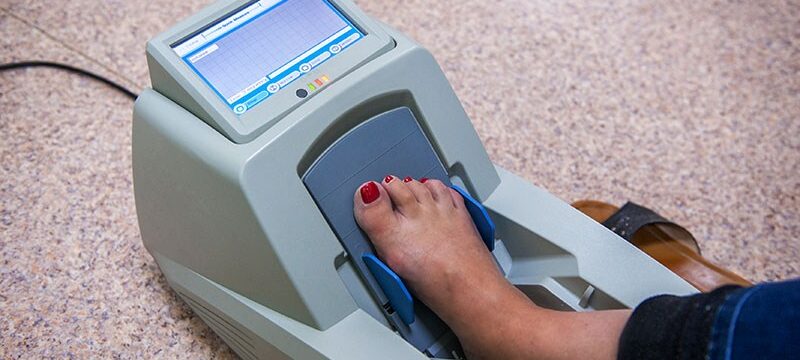An updated Canadian osteoporosis guideline emphasizes the need to assess older patients of both sexes for risk for fractures. It also urges clinicians to provide advice on exercise and nutrition and, as appropriate, to prescribe drug treatments.
Osteoporosis Canada conducted an extensive review and evaluation of published studies to update its 2010 guideline on skeletal health. The authors used the Grading of Recommendations Assessment, Development, and Evaluation framework to weigh evidence.

Dr Sandra Kim
They also reached out to researchers, clinicians, and patients with osteoporosis. Initial work included a survey in which more than 1000 patients participated. The aim was to identify the needs of physicians and patients, author Sandra Kim, MD, assistant professor of endocrinology and metabolism at the University of Toronto, told Medscape Medical News. Kim served as chair of the pharmacotherapy working group for the Osteoporosis Canada Clinical Practice Guidelines Update. “We took a very broad approach in the beginning with an open mind,” she said.
The guideline was published October 10 in CMAJ.
Evidence Levels Vary
About 2.2 million Canadians aged 40 years and older were diagnosed with osteoporosis in 2015–2016, according to a government estimate. The Osteoporosis Canada guideline is intended to help clinicians, especially those in primary care, and patients devise strategies to protect skeletal health and reduce fracture risk throughout older adulthood.
The document includes 25 recommendations and 10 good practice statements. The authors noted that the strength of the evidence for the recommendations varied widely. This variation resulted in part from men having been “underrepresented in the clinical evidence of certain interventions and outcomes,” the guideline authors wrote.
For example, the guideline offered a “strong recommendation” based on “high-certainty evidence” that postmenopausal women and men aged 50 years and older who had recently had a fracture receive help in preventing further fractures. The guideline recommends consulting with fracture liaison service programs.
But many of the other recommendations in the guideline were made with less certainty. For example, the guideline offers a “strong recommendation” for pharmacotherapy for postmenopausal women and men aged 50 years and older who have already had certain fractures. There is high-certainty evidence for this recommendation for women, but the evidence is of moderate certainty for men, according to the guideline.
The guideline also offers a conditional recommendation that suggests conducting bone mineral density (BMD) testing for postmenopausal women and men aged 50–64 years who have previously experienced an osteoporosis-related fracture or who have two or more risk factors for the condition. There’s low-certainty evidence for this screening for women and very-low-certainty evidence for this screening in men, the guideline says.
Gender Gap
The Osteoporosis Canada guideline stands apart from those of other groups in offering recommendations for addressing bone health in men. Guidelines from other groups have recommendations only for women and note a lack of robust evidence about what screening and treatment for osteoporosis does for men.
Commenting on the guideline for Medscape, Rajesh K. Jain, MD, assistant professor of medicine at the University of Chicago, commended Osteoporosis Canada for its approach. Its work may draw more attention to the need to address bone health in men, he said. Jain did not participate in drafting the guideline.
“About one third of all fractures occur in men, and up to 1 in 4 men will break a bone due to osteoporosis. However, screening rates are very low, and treatment rates, even after a fragility fracture, are low in men,” said Jain.
Eric S. Orwoll, MD, professor of endocrinology, diabetes, and clinical nutrition at Oregon Health and Sciences University in Portland, also noted that other guidelines merely note a lack of conclusive evidence about options for men in terms of screening and treatment for osteoporosis.
“I hope that changes. It is a major issue,” said Orwoll, who was not involved with the Osteoporosis Canada project. “The Canadian guidelines really take that on, and that’s one of the things I really like about these guidelines.”
Orwoll said that a “sea change” in the approach to men’s bone health had taken place in recent years, with greater recognition of men’s need to prevent fractures.
“Everyone understands and agrees that osteoporosis is a common problem” in men, he said, “and it should be addressed in guidelines like this and clinical practice.”
Hard Data Needed
The US Preventive Services Task Force (USPSTF) is updating its recommendation on screening for osteoporosis. In 2018, the panel gave a B rating to its recommendation for screening for osteoporosis with bone measurement testing to prevent osteoporotic fractures in women aged 65 years and older. It also gave a B rating to its recommendation for this screening for postmenopausal women younger than 65 years who are at increased risk for osteoporosis.
But for men of any age, there was not yet sufficient evidence to assess the balance of benefits and harms of this screening, said USPSTF.
The Canadian Task Force on Preventive Health Care recently offered similar recommendations. In May, the task force did not recommend screening for preventing fragility fractures in women aged 40–64 years and men aged 40 years and older who do not appear to be at high risk for fractures.
The task force recommended “risk assessment–first” screening for prevention of fragility fractures in women aged 65 years and older, with initial application of the Canadian clinical Fracture Risk Assessment Tool without BMD testing.
Guylène Thériault, MD, the co-chair of the Canadian task force, emphasized to Medscape that the need to understand how osteoporosis screening and treatments work in men persists. Much of the available data fail to answer key questions and instead focus on the surrogate marker of BMD readings, she said.
“That’s not what we want,” Thériault said. She explained that hard data on fractures, mortality, pain, and quality of life are necessary. “That’s what we should ask the studies to provide.”
Funding for the Osteoporosis Canada Guidelines was provided by the Canadian Institutes of Health Research and Osteoporosis Canada. The authors of the guideline reported financial and professional relationships outside of this work, including honoraria and consulting fees from Alexion, the American College of Obstetrics and Gynecology, Amgen, Amolyt, Ascendis, the Canadian Agency for Drugs and Technologies in Health, the Canadian Institutes of Health Research, Eli Lilly, the Endocrine Society, the Foundation for Medical Practice Education Small Group Practice–Based Learning Program at McMaster University, Genentech, Insight Therapeutics, the International Society for Clinical Densitometry, Paladin Laboratories, the National Institutes of Health, Novartis, the Ontario College of Family Physicians, Osteoporosis Canada, Pri-Med Canada Scientific Planning Committee, Radius, Sanofi, Takeda, and Ultragenyx. Jain has received funding from the Amgen Foundation for his research. Orwoll has consulted for many companies, including Sanofi and AstraZeneca. Thériault is the primary care co-lead for Choosing Wisely Canada, a group that seeks to reduce unnecessary tests and treatments.
CMAJ. Published online October 10, 2023. Full text
For more Medscape news, join us on Facebook .
Source: Read Full Article
